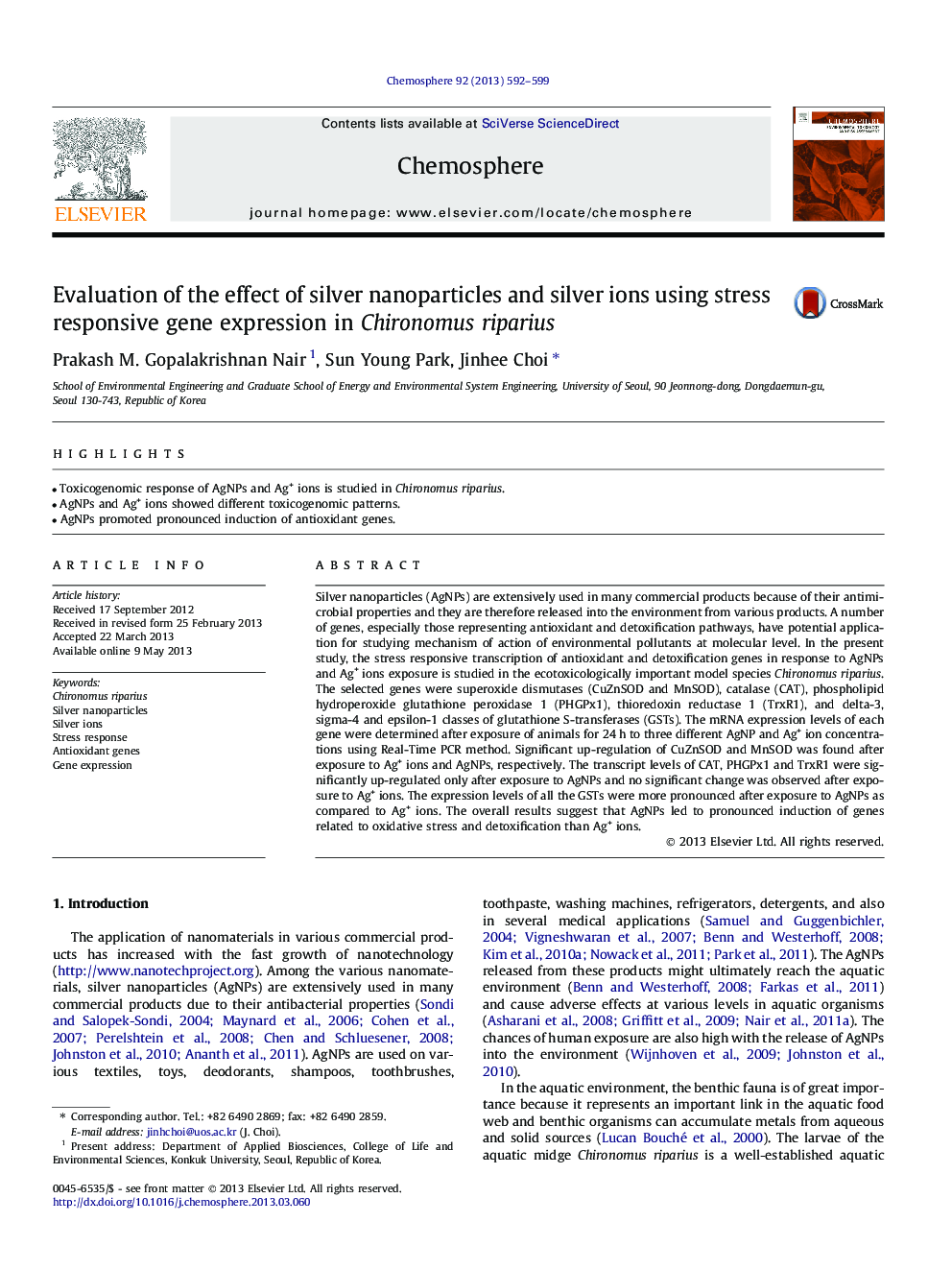| Article ID | Journal | Published Year | Pages | File Type |
|---|---|---|---|---|
| 6310460 | Chemosphere | 2013 | 8 Pages |
â¢Toxicogenomic response of AgNPs and Ag+ ions is studied in Chironomus riparius.â¢AgNPs and Ag+ ions showed different toxicogenomic patterns.â¢AgNPs promoted pronounced induction of antioxidant genes.
Silver nanoparticles (AgNPs) are extensively used in many commercial products because of their antimicrobial properties and they are therefore released into the environment from various products. A number of genes, especially those representing antioxidant and detoxification pathways, have potential application for studying mechanism of action of environmental pollutants at molecular level. In the present study, the stress responsive transcription of antioxidant and detoxification genes in response to AgNPs and Ag+ ions exposure is studied in the ecotoxicologically important model species Chironomus riparius. The selected genes were superoxide dismutases (CuZnSOD and MnSOD), catalase (CAT), phospholipid hydroperoxide glutathione peroxidase 1 (PHGPx1), thioredoxin reductase 1 (TrxR1), and delta-3, sigma-4 and epsilon-1 classes of glutathione S-transferases (GSTs). The mRNA expression levels of each gene were determined after exposure of animals for 24Â h to three different AgNP and Ag+ ion concentrations using Real-Time PCR method. Significant up-regulation of CuZnSOD and MnSOD was found after exposure to Ag+ ions and AgNPs, respectively. The transcript levels of CAT, PHGPx1 and TrxR1 were significantly up-regulated only after exposure to AgNPs and no significant change was observed after exposure to Ag+ ions. The expression levels of all the GSTs were more pronounced after exposure to AgNPs as compared to Ag+ ions. The overall results suggest that AgNPs led to pronounced induction of genes related to oxidative stress and detoxification than Ag+ ions.
